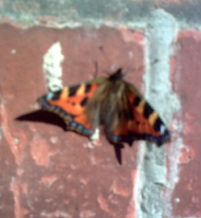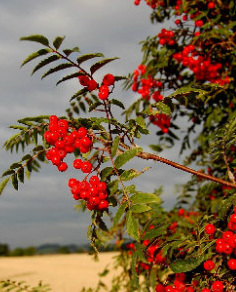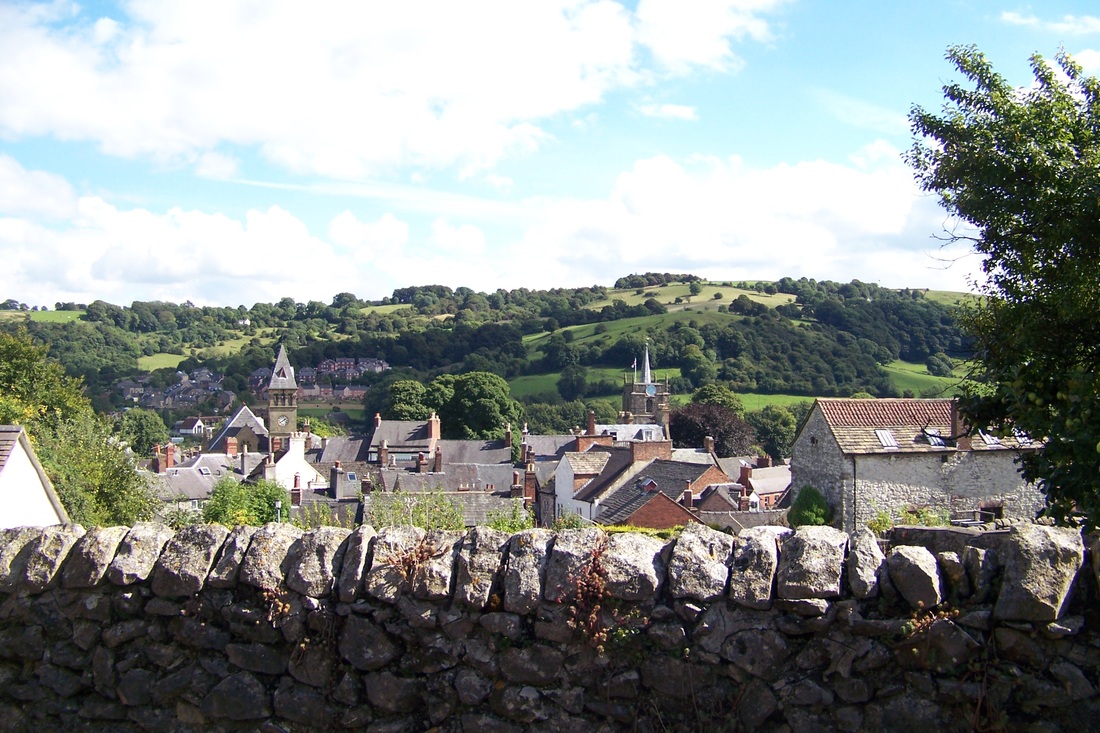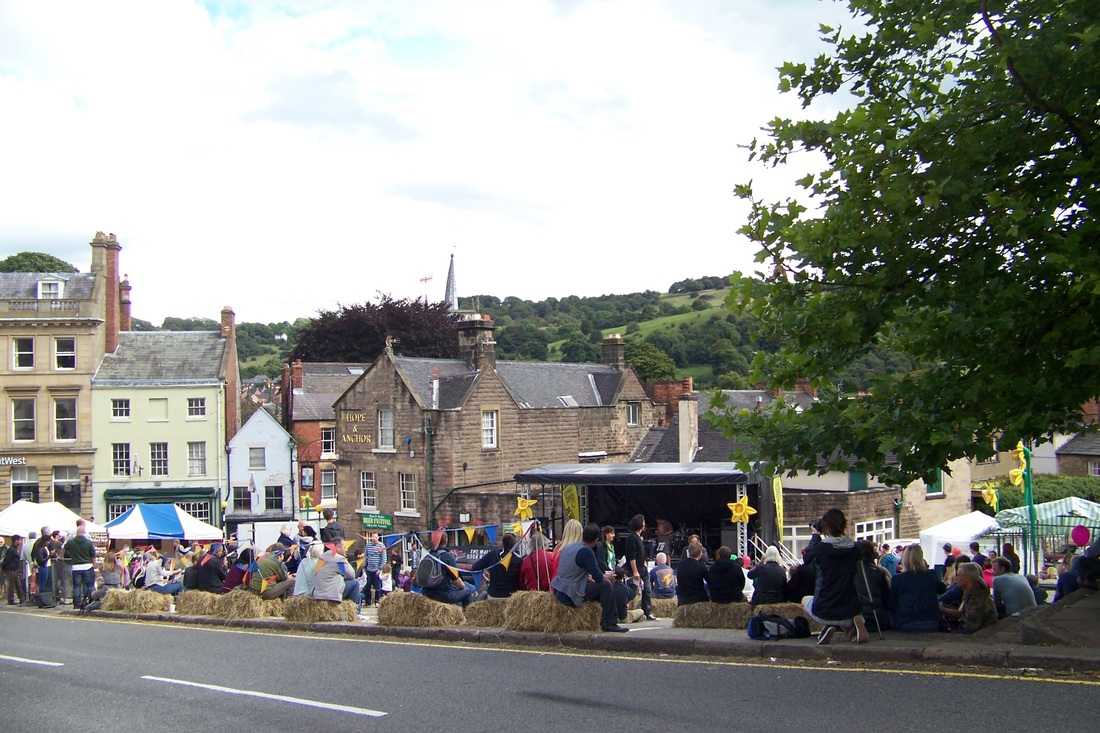 As I was teaching in the Town hall this morning I caught sight of a Tortoiseshell butterfly pressed against one of the window panes, and made a mental note to rescue it later and release it into the sunshine. However when class was over I discovered it was trapped between the glass and a sheet of heavy Perspex, in a space too deep and narrow to reach my hand into. What’s more there was another, smaller Tortoiseshell trapped in a window space further along. The larger butterfly seemed distressed, battering its wings against the pane in an attempt to escape, the other had given up and was resting, wings spread against the glass. I searched the building for something to reach down into the space, and found a long twig in a flower arrangement. Then I climbed up onto a chair – the windows are high – and began my rescue mission. It took a long time, several near misses, much fluttering, much panic, my hands clumsy and trembling with stress that increased with each futile attempt – I despaired that I was making everything worse - until finally the first butterfly began to climb up the stick. I drew it up so slowly, into my cupped hands and out of the building, leaving a bright torn fragment of wing behind. Somehow, second time around, both butterfly and I seemed to know what to do, and she emerged within minutes, unharmed. My husband always telepaths his intentions – he told me later – when he’s trying to rescue an animal or insect. If nothing else, this must focus the mind. Who knows what touches these creatures – what they feel or experience? I only know that my sense of connection in that moment was intense, and relief at the outcome lightened the hour. On the same day, my cousin in his brilliant blog, nigeness, writes of the 'glorious profusion' of the butterfly year.
1 Comment
The Rowan, or Mountain Ash in one of my favourite trees. There’s a long row of them opposite the petrol station in Wirksworth - dense clusters of orange berries against deep blue sky this brilliant September. Mountain Ash is such a resilient tree – I’ve seen them growing high up the mountain side, wizened and
leaning against the wind. I lay awake and thought if the year represented a lifetime, where would the seasons begin and end? I suppose it’s different for each person – we all grow up and grow old at different times. Autumn – a time of change and intensity of colour, of weather, of light. On Saturday I went to a dance workshop in Derby and had a great time moving fast, swooping down to the floor and back up again, trying not to mind that the edges of my movement phrases were ragged, and that sometimes I skimmed through the gist of the sequence, rather than achieved accuracy. There seems no time left to work on refinement, and what would be the point? I was at least twenty years older than the teacher as well as the other dancers, and I don’t really want to dance like that any longer. How do I want to dance? I’m thinking about it, working ideas, reading, moving a little between my classes. It seems to be in a state of flux. I only know that I will dance into old age like those extraordinary women on Fabulous Fashionistas, shown on channel 4 last week. And that I’ll carry on teaching movement. It’s a way of life – the best way of life. This short film, Works on Grass, by Welsh choreographer and film maker, Joanna Young, created in Wales, and redolent of the poetry of R.S. Thomas, recalled me to everything I love about movement – intensity of purpose, a physical and emotional connection with the earth or the space we move in, and am economy of form. No gesture is superfluous. There’s so much noise and manic activity in much dance I see. This small dance filmed in a field in Wales is fine as a poem - a beautiful thing. Knowing how controversial an abstract word like soul can be, how unsettled people can get about anything they think alludes to religion, and questioning how indeed the soul can be expressed through dance – I looked up the definition.
Here it is – soul: the spiritual or immaterial part of a human being or animal, regarded as immortal, a person’s moral or emotional nature or sense of identity. Soul – indefinable through verbal language – I am certain we touch the source of something I would call soul sometimes as we dance. At the same time I’m endlessly fascinated and engaged with the sheer physicality of dance and movement, the interrelation between body and mind that offers up more and more the deeper I go. ‘Mind is located in every cell of the body.’ Today I came across this statement by the cell biologist, Candace Pert, as I was reading Eric Franklin’s book Conditioning for Dance. It reminded me of Joseph Pilates' statement - it is the mind itself that builds the body. I'm not interested in the battles and arguments between scientists from different camps, I don't know enough, and I'm not sure they do either. But I'm interested in the discoveries I make as I reflect on the body and dance, and as I observe the people I teach. I recently attended two ballet classes in London – both apparently for beginners. I observed my own reactions, and those of other dancers. The ballet class is such a strange environment. It should, especially for the adult non-dancer with no pressure to perform well, be a happy place. But this is far from the case. In the first class I sensed the tension as soon as I entered the studio - a wall of negativity and fear that almost made me turn round and walk out. Ballet training is fraught with all kinds of issues for so many people, frustrated longing, sense of failure, negative body-image, competiveness, despair about injury and age and body weight, but I wouldn’t expect to feel such tensions in a class for adults, unless many were ‘failed dancers.’ With all that going on it was so difficult to feel any pleasure in dancing, and I came away exhausted and dispirited. A week later I attended a class for absolute beginners and had an entirely different experience. Here were people who wanted to dance for fun, with a teacher who knew exactly how to gauge and manage the mood of the class. We worked slowly on accurate placement with plenty of encouragement given, people laughed, relaxed and worked hard. For myself I was able to return to the very basic building blocks of posture and balance and work deeply. I experienced my body and mind working in balance to create movement that freed tension, and later a sense of such well-being, as if every muscle had been washed with cooling water. Franklin writes ‘without a feeling of safety and belonging, a dancer will tighten up and lose his ability to improve.’ I'm in the process of exploring how simple exercises performed mindfully might bring about a transformation in movement – more strength, fluidity, balance, and absence of pain. And how much is enhanced by the quality of teaching, and the openness of receiving. Yesterday I went up to the Stardisc in the afternoon to meet and dance with two young Australian dancers, Alice and Adam from company Lingua Franca, part of the artists’ exchange between Wirksworth and New South Wales. I’d never met with them before and we greeted each other and began to dance with no further verbal communication. We danced for half an hour as the sun came and went and the rain fell, making the surface of the Stardisc dark and gleaming, so we danced with our reflections too. It was playful, dynamic, unpredictable as dancing with two young ponies, and just so much fun.
I have thought recently how a world without voice would be – if we only communicated through dance. It’s a funny thought. Imagine parliament. It would be something like the opening section of Jooss’ ballet The Green Table. To communicate through a form of movement that must not harm anyone. Another world. The language of movement is abstract, of emotion rather than reason. It’s more than this too. The language of the soul? It's a language that some of us must speak, and that many would be enriched by discovering. My young friend, another Adam, who had no verbal language, often communicated through a gentle hand dance – a slight fluttering movement of wrist and fingers against my own. I miss that now he’s died. It was unique only to him. At the end of Salamanda Tandem’s wonderful performance Quarry-o-sion in Shaw’s Quarry on Sunday I spoke to one of the volunteers who’d helped the company over three days of setting up and performing. ‘My world has been opened up,’ she said. That’s the power of movement. Walking through the narrow lanes of my home town of Wirksworth this weekend, I felt so glad that I discovered this grey market town. Thirty years ago when I first visited with Nick Antram on a smoky autumn afternoon we wandered around Church Walk, paused to listen to music by Messiaen played brilliantly on the church organ, then on up to the twisting lanes of the puzzle gardens and the hills beyond. I fell in love with the town straight away. In those days – before it was discovered - you could buy a cottage for ten thousand pounds. The same building would now be on the market for at least two hundred thousand. Despite that, high on the hills amidst the limestone quarries and old lead mines, Wirksworth still retains its rawness.
This weekend of the annual art and architecture trail the town was bustling with visitors. With over seventy houses transformed into art galleries, there’s far too much to see, so I wandered around, absorbed the atmosphere, and delighted particularly in the work of four artists. In the dusty old parish rooms transformed into a space as fine as London gallery, I stumbled into a curtained off room to see the work of Yvonne Jordan, ‘Every Contact Leaves a Trace,’ - a single, high resolution, back-lit photograph of suburban street in that livid light just before dark when everything is at its most intense. Empty except for a battered Ford Fiesta, a discarded mattress by a wall, distant buildings with dark windows - the street was unbearably bleak and lonely. But backlighting transformed it into place of luminosity and colour. I sat for a long time absorbing the light, the exquisite detail of plant and brick and sky, aware of a calming effect, a sense of coolness behind my eyes. It would be wonderful, and healing I think, to see work like this on the walls of hospital wards. In the blacksmith's dimly lit workshop there was a huge mobile filling all the available space - The Blacksmith’s Depositree, an installation by Katherine Vaughan and Greg Storrar. Three concentric circles hung from the ceiling and on lengths of silver wire discarded metal objects, found in the workshop – a metal flower, old tools, fragments of rusted iron – were attached and spot-lit from above. There were around two hundred objects, and the result was brilliant – a hanging tree, its decorations glistening in the gloom, a quality of fragility and delicacy, accompanied by the recorded sounds of the blacksmith at work. There were many beautiful moments over the weekend, but the loveliest was walking up to Shaw Quarry late in the afternoon to catch the last hour of Quarry-o-sion, an extraordinary dance performance by Salamanda Tamdem. I often walk the dog in the disused quarry, a huge arena surrounded on three sides by immense limestone cliffs overhung with trees, where the only sound is of starlings gathering or falling rock. In this environment, wearing radio headsets, we listened to pre-recorded sounds of mining, of birdsong, fragments of stories told by quarryman geologist Geoff Selby-Sly, layered with live observations by Isabel Jones as she navigated her way around this amazing landscape of rock. We watched Isabel dancing with her partner, Indra Slavena – the sensitivity of touch between them, the heightened awareness of place and space. I could have watched all day and wished I had arrived earlier. I stayed until the end. Is dance the language of the soul? This time last year I was in the middle of writing my novel Lord Nelson’s Eye - I still had little idea where my characters would take me and was exhausted with the effort of pushing against the confines of my own limitation. I was just about ready to abandon it all as a lost cause, when my tutor. Linda Lee Welch
told me this story. She’d been to a workshop for professional musicians where they were all asked to bring a piece to perform unrehearsed. Imagine the nervous tension, and how tempting it might be to cheat – after all it’s galling to make a mess of things especially in front of an audience. She told me there was a pianist who was trying so hard but just couldn’t get it together. Play it through badly, the course leader instructed. And so she did, just about, to the end – wildly and with many mistakes. Then the miracle happened - returning to a piece she’d rehearsed and knew well, she played as she never had before – finding a new sense of freedom and fluency. I wrote the words Play the Piano Badly on my wall in pink pen, and proceeded to finish the novel this year. The notion of letting go really helped – I could forget for a while the desire to write well and just let the voices speak through the chaos. It reminded me of a long ago photography lesson, the images rising as if by magic in the darkroom. In both dance and writing there’s a balance to be found between the demands of improving technique – a lifetime of practise, and the necessity to free the imagination – to breathe life into the work. The skill is in negotiating the balance. The more technically accomplished and experienced artist should have a greater capacity to let go, but this often isn’t the case. It’s so easy to get caught up in technique for its own sake. Cleverness can be so beguiling. I question what is my task as a writer? To learn to write as well as possible and be open to criticism, of course – and this is where self determination and stamina is required. But to be open enough to let something beyond self emerge – something we might name inspiration, or vision – something mysterious that really doesn’t belong to us alone - is an act of trust requiring the courage to make mistakes – to fail. Skilful technique only serves to give greater clarity to form. It would be a great thing to reach the point where neither success nor failure mattered too greatly – just to get on with the work without distraction. |
AuthorTricia Durdey dances, writes, and teaches Pilates. Archives
October 2017
|



 RSS Feed
RSS Feed